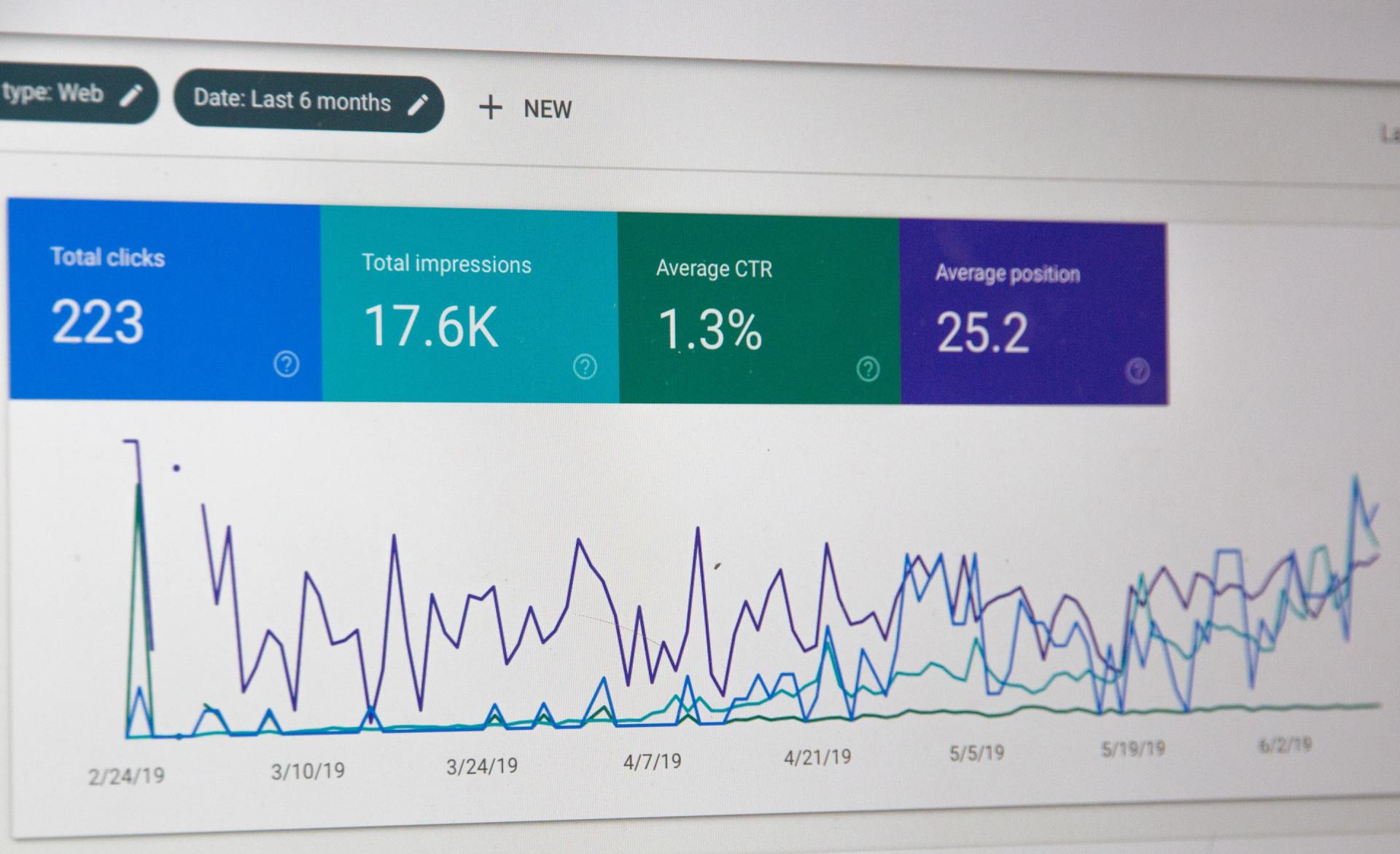Important Small Business Trends 2024
Today, small businesses have more tools at their disposal than ever to drive business growth. From automation and social media management to customer relationship management and analytics, small business owners can easily steer their business towards success.

Unfortunately, the digitization of modern business and marketing methods also brings with it a level of complexity that can make it difficult for business owners that are not tech savvy to know which tools and methods would be appropriate for their enterprise. Moreover, keeping up to date with new tech trends and technologies can also be challenging.
That’s why we’ve put together this article of
current small business trends to help you navigate the changing world of business and marketing in 2024 and beyond. Let’s dive in!
# 1 - Large Platforms Continue to Play A Strong Role in Changing the Small Business Model
Undoubtedly the ever-changing economy, the increase of remote work and other forms of hybrid business models is continually changing how we do business. In fact, a recent study revealed that of the over 30 million small businesses in the US, at least 80% operate with no employees. A great example of this is the Amazon ecosystem. In 2023 the company reported an estimated 2,200 small businesses registered under its Delivery Service Partner program.
Other companies with similar opportunities for small businesses include Apple and Google, both which have an ecosystem that creates a platform for developers, service providers and businesses to attract customers.
#2 - Small Business Commerce Is Shifting Online
With the fast-changing business models, including many small businesses ramping up to move product inventory to e-commerce, the way goods and services are bought to consumer have been completely overhauled. In the past, big budgets for TV ads and billboards were the norm. Today, small businesses have taken their storefronts online and continue to see success from social media and other online platforms.
In fact, an Innuit survey found that social media still ranks as the top method of content small businesses acquire new clients. In the study, 75% of respondents admitted to selling their products and/or services online.
Let’s take a closer look at the numbers below:
- In 2023, Etsy reported that the number of active sellers on their platform to reach nearly 6.30 million, up from roughly 5.3 million the year before.
- Etsy also reported 96.2 million annual users in 2023.
- Online marketing
costs 62% less than traditional marketing and generated 3X more leads
- According to a Statistica survey, in 2023, Amazon reached $746.22 billion in sales, reporting nearly 310 million in active users.
- A Statistica survey predicts Meta and Instagram users to reach 1.44 billion by 2025.
- In 2023, 30% of SMBs said they plan to boost spending on social media marketing and engagement. With 14% planning to spend their limited budgets on website analytics, 13% of CRM tools and 13% on email marketing services
- In 2023, Shopify estimated that there were more than 1.7 million sellers on its platform
- 18% of small businesses say that 25% of their revenue comes from eCommerce sales
- 70% of small businesses have ad spend budgets set aside for 2024, with 15-30% allocated for social media.
Clearly, social media and online commerce platforms are a key differentiator in the small business market. And it’s not just new merchants making the switch. Traditional brick-and-mortar retailers are making the switch to eCommerce as well.
Small businesses stuck with legacy marketing and selling systems are likely to lose key business growth opportunities, have poor customer engagement and suffer from poor lead conversations.

#3 - Lack of Resources Continue to Hinder Small Business Growth
Social media marketing, allows SMBs with limited resources to access a wider range of clients than ever before. And yet, market trends still show that for many enterprises, finding time and resources for marketing has been the biggest challenge.
Past reports show that nearly
49% of small business owners handle marketing for their business without external help due to a lack of resources. This tends to be particularly challenging because of the other hats small business owners wear.
#4 - SMB Goals Are Stagnant
Although the world has changed significantly over the past two years, many SMBs are still focusing on driving sales compared to driving innovation.
In a recent study, 28% of surveyed leaders said that driving sales is a top priority for their business. 18% said they are focusing on retaining and re-engaging customers, 11% on building brand awareness or conveying information, 9% state that gaining efficiency and cost saving is a top priority for them and only 6% are focused on collecting leads.
Considering the digitization of the current market, the lackluster focus on innovation and technology investment will likely enhance the challenges SMBs are facing today.
#5 - Software Solutions Offer Efficiency & Simplicity
In the world of small businesses, next generation solutions and software have become must-have tools. Most small businesses are too small to hire additional staff or back-office employees. Naturally these new technologies can offer much-needed relief and fill in the gaps.
A 2021 Clutch report found that at least 80% of small businesses were planning to outsource their critical business functions in 2021, and the number is likely to increase in the coming years.
Additionally, more SMBs are using customer relationship management (CRM) tools. This indicates a growing awareness of the necessity of these tools to achieve growth, with 23% of respondents saying that they use CRM and website analytic tools to help them with their marketing.
But this is not a new trend as far back as 2017, 94% of SMBs were using a combination of SaaS tools like HubSpot, Slack, Trello, BambooHR, and more to enhance and streamline operations like:
- HR
- Marketing and sales
- End-to-end project management
Today, most small businesses don’t need many on-premise staff to operate due to the above-mentioned tools. So let’s take a brief look at how they are disrupting the small business market.
1. Spotlight on HubSpot
As one of the fastest-growing marketing and sales software providers, HubSpot has gained a permanent spot in the small business market. It allows SMBs to create and manage sales and marketing campaigns at a scale that echoes the campaigns we see from much larger organizations.
In 2023, HubSpot generated $2.58 billion in revenue, with the majority of its business coming from SMBs.
2. Trello—End-to-End Project Management Support
If you’re looking for an all-purpose
project management tool, Trello has everything you need. The platform offers a digital whiteboard that allows remote or hybrid teams to brainstorm and collaborate seamlessly.
In 2019, the company had over 50 million registered users, a number that has most likely increased, but no data has been published by Trello since then.
3. BambooHR: Simplifying HR
Bamboo HR provides one platform for all your HR management needs. It’s a digital HR department for small businesses. As a result, there’s been an increase in small business users on the platform.
As of 2021, the company had over 22, 000 clients and supports several million average daily users.
#6 - AI Technology Use Is On the Rise
As technology evolves, so does access to critical market data. Business owners now have more access to insights showing what’s working and what’s not. And compared to previous years, 55% of SMBs reported that they have great visibility into whether their marketing efforts are effective.
In addition to SaaS tools, the industry is seeing an increase in the adoption of AI-enabled technology. Trends like AI, ML and voice tech are not only becoming more accessible, they’ve become the golden standard for success and agility in today's market.
The great thing is that SMBs don’t have to break the bank to introduce these technologies in their systems. Most of these solutions are being built into the backgrounds of apps and tools already in circulation in the small business world.
As a result, automation will offer unprecedented simplicity, making it easier for small businesses to make data-driven decisions that are market-relevant and customer-centric. Moreover choosing AI-enabled solutions will likely cure the resource challenge and help SMBs save time and take a more approach to marketing.
Lastly, as the relatively new kid on the block, voice technology is disrupting the way businesses connect with customers. For example, in 2020 digital assistants were said to have reached more than 7 billion devices.
Forward-thinking small businesses that combine AI, ML, SaaS tools and voice technologies experience more efficiency, agility and profit.

#7 - An Online Presence Is Essential
The rise of online shopping has made it impossible for the modern SMB to operate without a
digital presence. Traditionally, many small businesses relied on the local market, world-of-mouth and paper, magazine or TV ads. In today’s world these methods are slowly becoming obsolete.
Unfortunately, many SMBs struggle to leverage their digital presence, with very few seeing success. Surprisingly, a Techreport market survey revealed that 24% of US SMBs were operating without a website in 2023.
This is particularly worrying because the numbers show that 25% of business is conducted online and likely to grow by more than 25% over the next few years compared to those without one. Moreover, millennials purchase 60% of their goods and services online.
One likely reason for these new trends is the current shift in customer acquisition channels the global move of consumers to online. Additionally, millennials are slowly replacing baby boomers as the main consumer segment globally.
This demand for on-demand digital services is extremely noticeable in the world of digital marketing agencies, where a large portion of advertising is shifting to digital. According to IBS, digital marketing agencies have been mushrooming at an annual rate of 11.6% over the last five years, forcing many traditional, on-premise, local SMBs to invest heavily in digital marketing.
A 2019 Go-Gulf report revealed that at least 50% of Google searches were location dependent, and 97% of interviewed consumers say the Google search engine is their preferred method of searching for local businesses.
Clearly, local SEO is no longer an optional expense for SMBs.
#8 - SMBs Are Becoming More Human-Centric
Like every other business function, marketing can easily turn robotic and impersonal. However, in today’s digital atmosphere, consumers are looking for the human connection and SMBs need to ensure that their marketing and customer engagement strategies are human-centric and authentic.
Many SMBs are realizing this significant shift, investing more and more in tools that enable better communication, service delivery and flexibility.
The best marketing strategy needs to be overwhelmingly human and speak to the emotional aspects of the consumer’s decision-making.
Every small business owner needs to answer the following questions:
- What challenge is your business helping your clients overcome?
- How do you build trust with your customers online?
- How are you helping them become the person they want to be?
The key is to offer more than a product, service or price point.
#9 - SMBs Are Going Cashless And Using Cloud-Based Accounting Software
Many small businesses fail as a result of mismanaged finances. That’s why there’s a growing number of SMBs turning to automation to ease the burden of financial administration.
One growing trend in this direction is that many SMBs are going cashless. While
e-commerce businesses were already using digital payment methods, there are many brick and mortar SMBs that are adopting this trend as well.
This makes it easier for SMBs to facilitate transactions on mobile devices and digital point-of-sale systems. Additionally, statistics show that cash purchases above $10 are falling sharply.
Another trend to watch for is the move away from traditional desktop-based accounting software towards digital, cloud-based software. Many SMBs are seeking opportunities to streamline their workflows so they can work more efficiently.
Cloud-based accounting software such as Quickbooks are giving small businesses more options for seamless collaboration with external bookkeepers and accountants while integrating with hundreds of other related applications.
As a result, business-critical functions like workflow management, bookkeeping, scheduling, and other helpful tools can be managed at the click of a button.
#10 - Authenticity Is Emerging As the New Sales Tool
Our world today is oversaturated with information, and many consumers are more cautious when interacting with a new brand. This has a direct impact on the
marketing and sales efforts of emerging SMBs that are still starting out or for more established businesses that are trying to penetrate new markets.
On average, a consumer receives 32-85 push notifications on their mobile devices and at least 121 marketing emails. This leads to several challenges such as:
- Declining subscriber engagement
- Subscriber loss
- Compromised data quality and integration
- Revenue loss
- And more
Successful SMBs need to declutter the chaos and reduce the noise and since 2019 many forward-thinking business leaders are focusing more on authentically educating the buyer of the value their business brings to the buyer compared to impersonal marketing.
Going forward, the customer must always come first, and the products and services SMBs offer need to market themselves. This is the only way to ensure that you spend time delivering value and innovative ways to address your client’s pain points in a way that makes them loyal to your brand.
#11 - AI-Driven Marketing Is Driving Sales
Over the next few years, there’s likely to be a dramatic shift to AI-powered business as major networks aim to remove complexity from the end user. A few examples of this include:
- The Netflix movie recommendation feature
- Your Facebook newsfeed that’s based on the people you follow and the things you like
- Google Maps
All these are great examples of machine learning in action, and the amount of data these networks acquire on user behavior, customer preferences and buying trends is staggering.
What does this mean for SMBs?Data-driven technologies can be leveraged to drive sales if you feed the algorithm with the right data. As a result, small businesses should take the following steps:
- Setting up your digital plumbing: In other words, you need to ensure that the backend and frontend of your website is integrated for remarketing
- Choosing ROI-based objectives: You need to know what each client is worth at every stage of your sales or marketing funnel, and this means that your systems need to be able to detect and fix anomalies automatically
- Loading your product catalogs: Obviously, SMBs cannot compete with giants like Amazon, but having an organized, user-friendly catalog of your products online goes a long way. Your content library needs to come in bite-sized snippets like 15 second videos for Instagram Stories and partial phrases for your website chatbots that are easy to digest
Overall, what’s clear is that the complexity of today’s AI-driven marketing does not allow for any attempts to ‘trick’ the algorithm. SMBs need to follow systemic steps that correctly feed data into their systems.
#12 - Cyberthreats Are Emerging As a Top Concern
While digital connectivity provides numerous benefits of SMBs, it has also become a Pandora's box of emerging cyberthreats that are increasingly becoming sophisticated and harder to beat.
In fact, a recent Intuit survey found that cybersecurity is the biggest threat to SMB stability, with many owners shying away from digital technology due to this threat.
A major concern for SMBs is the lack of resources to sufficiently defend their IT infrastructure and hackers know this. That’s why SMBs have become a primary target for cyber criminals. Industry experts estimate that at least 50% of all data breaches affect small businesses.
In the past year, over 61% of SMBs have been a victim of one or more cyber attacks, and while cyber insurance can mitigate the risk, over 90% of SMBs have not purchased any form of cyber insurance.
And the influx of new technologies like SaaS tools and IoT devices are increasing the attack surface of many SMBs. Unfortunately, there’s no easy solution to the problem as more than 32% of SMBs say that a lack of funds is their biggest challenge when dealing with cybersecurity threats, according to a recent SMB IT Security Report.
Conclusion
As technology continues to evolve, the world of small businesses is also going through unending changes. While it’s become relatively easy for SMBs to gain insight into the market, the majority of businesses don’t have the necessary funding and resources to leverage the opportunities presented by digital transformation.
It’s a sticky situation to be in, considering the rise in consumer demand for digital-ready services and products from SMBs. Nevertheless, with a bit more focus and time, small businesses will likely whether the digital wave fairly well.










